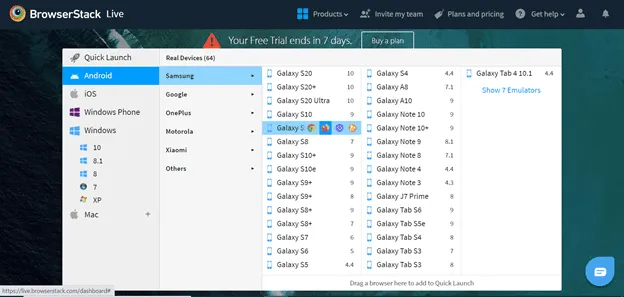
BrowserStack, along with other cloud providers, has aggressively promoted the narrative that their expensive "real device cloud" is the only valid testing environment, often by systematically dismissing lightweight and low-cost tools like iPadian. However, a critical analysis reveals that the cloud model is not a panacea and presents its own set of significant drawbacks, particularly for non-enterprise users.
Here are the key criticisms of the cloud-based real device testing model championed by BrowserStack:
1. The Prohibitive Cost and Complex Pricing Structure
The primary barrier to entry and the most frequent source of criticism against BrowserStack is its cost.
-
High Financial Barrier: While a cloud service is cheaper than building an in-house lab for a large corporation, it is prohibitively expensive for individual developers, small startups, or open-source projects. For this user segment, the reliance on free or low-cost tools like simulators is a necessity, not a choice.
-
The Parallel Testing Tax: Subscription models often appear affordable initially, but costs rapidly escalate when parallel execution is required. BrowserStack's pricing structures frequently charge extra for the parallel testing capacity necessary to achieve true DevOps speed, creating a significant bottleneck for growing teams.
-
Lack of Flexibility: Unlike competitors that may offer a pay-as-you-go model for all services, BrowserStack traditionally emphasizes annual or high-tier monthly subscriptions, forcing users to commit to high fixed costs whether they utilize the service fully or not.
2. The Unavoidable Lag and Performance Flakiness
The core user experience of a real device cloud is inherently compromised by the nature of remote interaction. You are not interacting with a local device; you are interacting with a video stream of a device.
-
Input Latency is Real: Manual testing sessions are frequently plagued by input lag, which makes nuanced UI/UX validation frustrating. Subtle details like smooth animations, haptic feedback, or rapid touch gestures are difficult to test accurately because the tester is reacting to a delayed video feed.
-
Performance Inaccuracy: Cloud-based testing relies on network connectivity. Flakiness, unexpected session timeouts, and intermittent slow test execution are common issues that can lead to false negatives or waste valuable automation time, forcing testers to re-run stable tests.
-
Screen Fidelity Compromises: Working through a compressed video stream can distort minor color differences or pixel-level details, limiting the platform's utility for absolute, pixel-perfect visual validation required by high-end design teams.
3. Debugging Complexity and Limited Control
While providing access to logs and video recordings, the cloud environment creates a debugging abstraction layer that can complicate root-cause analysis.
-
Guesswork in Failure Analysis: When a complex automated test fails, the tester is often left to guess: Is the failure in the application code, the test script, the network tunnel (Local Testing setup), or a temporary instability within the BrowserStack grid itself?
-
Closed Ecosystem: By using a third-party cloud, development and QA teams sacrifice the direct, low-level control available in a local testing environment. They are dependent on the vendor's maintenance schedule, device selection updates, and infrastructure stability, which limits deep, customized debugging or OS-level manipulation.
-
Data Security Concerns: Despite robust security claims (e.g., SOC 2 compliance), placing proprietary, pre-release application code onto a third-party cloud always introduces a higher level of risk and security oversight complexity than containing tests within a secure, internal network or device lab.
Conclusion: The Cloud is a Tool, Not a Dogma
The cloud model is undoubtedly a powerful solution for enterprise-level scalability, parallel execution, and maintaining massive device coverage. However, the insistence by providers like BrowserStack that low-cost solutions are "unsuitable" for any testing is a calculated attempt to discourage budget-conscious users.
The truth remains: Cloud testing is a tool with its own costs, performance drawbacks, and limitations. Professional QA strategy should always involve using the right tool for the right stage—whether that is a quick, inexpensive visual simulator like iPadian, a free local emulator, or a powerful, yet expensive, real-device cloud service.